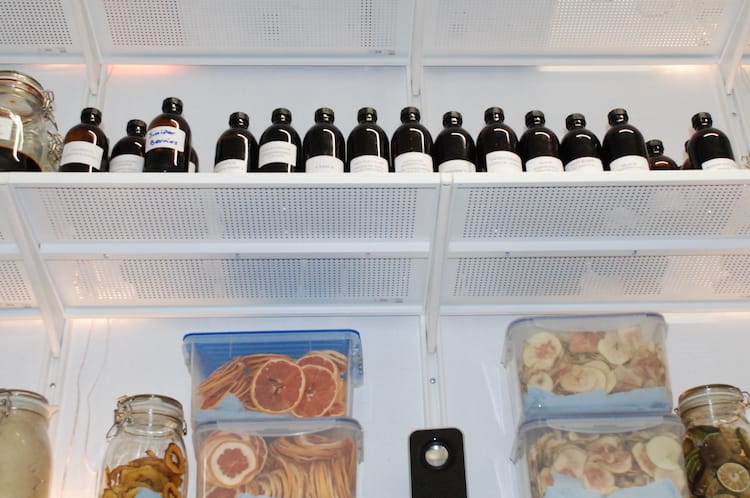Months on, council still investigating ethics complaints against independent councillor
Two councillors have lodged complaints with the council against independent Councillor Gavin Pepper. But there’s been no conclusion yet to those processes.
Jarrod Cuffe and Baz Gargan have experimented with 65 flavours – from lime to hawthorn berry – for their new range of bitters. They’re hoping to have them in stores in late October.

If you’re infusing alcohol with chilli, go easy on the chilli. In cramped brewing quarters, don’t crack your skull on metal containers. Be patient.
Jarrod Cuffe and Baz Gargan have learnt a few important lessons in the past six months.
In their tiny laboratory in the Chocolate Factory on King’s Inns Street, the start-up bitters makers have been tinkering with recipes that they hope will compete with the might of Angostura.
“It’s a passion project of ours,” said Cuffe on a recent Thursday. With batches brewed, some of which have been banished and others bottled, they’re now close to launch.
The whole gig kicked off when Cuffe and Gargan met at the Irish Craft Cocktail Awards last year.
By day, Cuffe works as a drinks supplier around Dublin. Gargan mixes cocktails at Delahunt restaurant on Camden Street.
Why not brew some Irish bitters? they asked each other. Cocktails have made a comeback, and one of the key ingredients in many of them is manufactured by few.

In their laboratory, there are tupperware pots and mason jars filled with dried fruits. Sieves, knives sponges, and detergents clutter metal shelves. Spices sit next to speakers, bags of sugar next to glassware.
At the centre, Cuffe and Gargan point out their bottled concoctions lining one of three shelves on the wall.
“We basically started by walking into the health-food shop and bought everything we didn’t recognise,” says Cuffe. “Then it was just trying all these different flavours.”
Cuffe and Gargan’s Off the Cuff Bitters are made by infusing clear alcohol (50 percent ABV) with, well, whatever takes their fancy.
But bitters, in their earliest forms, and for centuries, were often used medicinally.
Their origins are not known for sure, but by the time the 19th century closed, they were a widespread product often sold as a tonic to aid digestion. They became the brief of the snake-oil salesman across the United States, while south of Mexico their modern progenitor was invented.
In the 1820s, German doctor Johann Siegert was based in the town of Angostura in Venezuela. A surgeon in the army of Simón Bolivar, who was in the midst of liberating much of Spanish South America from colonial rule, he began to concoct his aromatic bitters, which were said to aid the digestion of the troops.
Since then, Angostura bitters have become a mainstay of the cocktail market, known for the 200ml bottle with the oversized label. “There’s a reason Angostura has been around so long,” says Cuffe. “It was a brand that wasn’t killed off by prohibition [in the US].”
There are nearly endless possible ways of making bitters, so there’s plenty of room for experimentation. It’s mostly herbs and spices, but there’s one other key ingredient, says Cuffe.
“The process of making bitters, the only prerequisite is patience,” he says with an Australian twang. “We didn’t know what we were doing when we started. We almost know what we’re doing now.”
Bitters, as opposed to bitter spirits, aren’t unlike cordials. They’re sticky in texture and pack a punch if consumed straight. Unlike cordials, though, there’s little sugar in them.
The bitter, aromatic punch comes from the way they’re made. “You don’t lose too much of the flavour,” says Gargan. “You’re not cooking it, you’re not watering it down. You’re just basically whacking that flavour into the spirit.”
First, Cuffe and Gargan chop up the raw ingredients: orange peel, liquorice root, dandelion seeds, cardamom, allspice.
They mix these with their chosen spirit and leave the mixture to sit for one month. When the time is right, the mixture is strained, and sits again, to remove the fine particles.
So far, they’ve experimented with 65 different flavours, from limes to hawthorn berry to peppercorns, with barks and roots integral to the mixture’s sour-sweet flavour.
Cuffe takes three small glass dropper bottles down from one of the shelves. “Just stick out the back of your hand,” he says, unscrewing the first bottle. “Right, give that a lick. This first one is mark one.”
One small drop singes the taste buds.
Next up, “mark two” is more palatable, yet still a bitter bang. “As it evolves we tried to refine what we do,” he says. “It’s a little less of this, little more of that, little extra this, little extra that.”
The third and final droplet of the brown liquid goes down smoothly. Sweeter, it contains 23 ingredients, says Cuffe. (The earlier two version had 18 and 19 ingredients, respectively.)
Cuffe and Gargan plan to produce four flavours for the public, in 50ml bottles for sale at €10 each.
From Angostura to Peychaud’s, bitters are so closely associated with cocktails; Manhattans, Singapore Slings and Old Fashioneds all contain them. But they can also be used to enhance cooking recipes in the kitchen at home, say Gargan and Cuffe.
The pair started with an herbal mixture and an aromatic one. For the next two, it could be just peppermint, it could be chilli.
They’ve just ordered bottles and labels. With a bit of luck, their bitters will be behind bars and in stores by late October, they say.